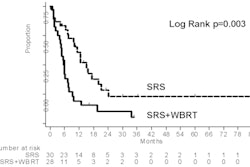More than 1,000 Canadian men treated for low- and intermediate-risk prostate cancer with low-dose brachytherapy have had excellent five- and seven-year outcomes, with very low rates of biochemical recurrences and cancer-related mortalities. Radiation oncologists at the British Columbia Cancer Research Centre in Vancouver believe that the results of this large population-based study validate the use of brachytherapy as a new reference gold-standard treatment.
This study is differentiated from previously published articles reporting similar outcomes in that it represents treatment performed at a regional cancer center rather than at research-oriented academic centers of excellence, and it includes patients followed up systematically with prostate-specific antigen tests with attention to survival measures. The study was published in a recent issue of Urology (April 2009, Vol. 73:4, pp. 860-867).
The British Columbia Cancer Agency, which offers oncology services to approximately 4.6 million residents of British Columbia and the Yukon Territory, began to offer brachytherapy implants to patients on July 20, 1998. Men eligible for the treatment had low-risk prostate cancer, with a Gleason score of 6 or lower, a prostate-specific antigen (iPSA) level of 10 ng/mL or less, and unilateral disease. Or, they had intermediate-risk, organ-confined prostate cancer with a Gleason score of 7 and iPSA level of 10 ng/mL or less, or a Gleason score of 6 or less and iPSA level of 10-15 ng/mL.
Of the patients included in the study, 58% were in the low-risk group and 42% in the intermediate group. They ranged in age from 45 to 82, with a median age of 66.
The study included all eligible consecutively treated patients, a total of 1,006 men, from inception of the brachytherapy program to October 23, 2003, a date arbitrarily selected to allow for a minimum follow-up of four years. The median follow-up was 54 months for biochemical outcome assessment and 66 months for survival.
Treatment included androgen deprivation therapy given three months before and after brachytherapy treatment. Each patient received a minimum peripheral dose of 144 Gy. Additionally, an oral antiandrogen was prescribed four weeks after treatment for patients with either an iPSA level greater than 10 ng/mL, a Gleason score of 7, or a preandrogen deprivation therapy transrectal ultrasound volume of more than 40 cm3 in the first year or greater than 50 cm3 in subsequent years.
Of the cohort, 65% received androgen deprivation therapy. Of these, 524 patients, or 80%, were assessed for testosterone recovery, and 94.4% of this subgroup had documented recovery of 5 nmol/L or greater. Their median time to recover was 9.6 months after completion of this therapy.
Outcomes
Thirty-five patients experienced biochemical recurrence. The overall five-year biochemical control rate was 95.6% and the seven-year rate was 94.0%. When the iPSA level was stratified by increments of 5 ng/mL, there was an inferior biochemical control rate among men with a PSA level of 5-10 ng/mL, compared with men with an iPSA level of less than 5 ng/mL or greater than 10 ng/mL.
A greater iPSA level correlated with an increased risk of recurrence, and androgen deprivation therapy use was increased with a decreased risk of recurrence, according to lead author Dr. W. James Morris, a radiation oncologist. Of the men who had a biochemical recurrence, 17 received secondary androgen deprivation therapy.
A total of five men, or 0.5%, developed metastatic disease. Two patients died, one from prostate cancer and one from treatment complications. The disease-specific survival rate was 99.8% at both five and seven years after treatment. Overall survival was 95.2% at five years and 93.4% at seven years.
Twenty-three patients died from other cancers, including brain, esophageal, lung, and pancreas cancers and skin melanomas. The authors did not specify if these included any of the patients who had developed metastatic disease.
The authors note that an argument can be made that, regardless of the course of treatment, the biochemical recurrence rates would be very low. They contend that modern prostatectomy series of even the lowest-risk patients have not surpassed the outcomes they report. They state that in a large, real-world population, prostate brachytherapy is an extremely effective treatment, and should be offered as an option for every prostate cancer patient who clinically qualifies to receive it.
By Cynthia E. Keen
AuntMinnie.com staff writer
June 16, 2009
Related Reading
Longer hormone therapy may improve outcomes in advanced prostate cancer, April 15, 2009
SBRT for early prostate cancer shows promising interim results, April 9, 2009
Prebrachytherapy hormone therapy linked to greater mortality in older men, September 24, 2008
ASTRO: Younger men benefit from prostate brachytherapy, November 1, 2007
Copyright © 2009 AuntMinnie.com



















